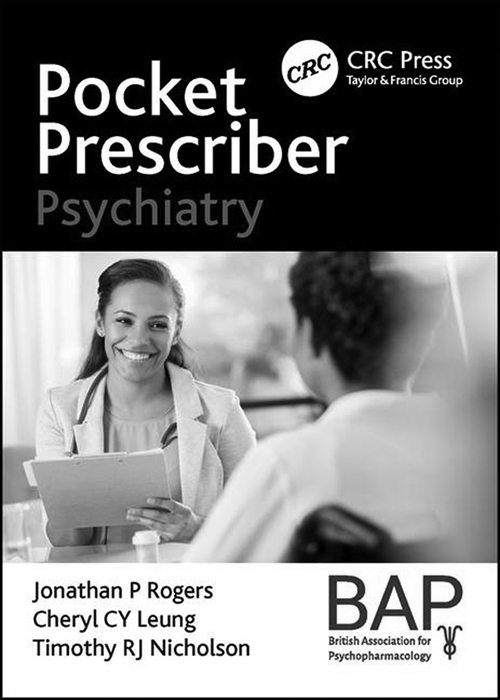
In late 2019, the General Medical Council's ‘The Workforce Report’ reinforced that the number of psychiatrists in the UK remains low and that more non-UK medical graduates are gaining a licence to practice. One outcome is that more non-psychiatrists and non-UK medical graduates are treating people struggling with mental health problems. Better textbooks are always required, and concise versions that can cater to a wide audience are increasingly in demand. Problematically, many existing texts have grown to become reference works at the cost of easy accessibility and portability.
In our opinion, ‘The Pocket Prescriber (Psychiatry)’ is one of those few tools from which practising psychiatrists and trainees – both UK and international medical graduates – as well as non-mental health specialists will equally benefit. It includes an impressive amount of information for its compact size. The first section includes an extensive list of UK abbreviations, particularly useful to international and recent graduates who have just started to work within the UK healthcare system.
A meaty second section contains a list of the most commonly used drugs in psychiatry, arranged alphabetically, including relevant information about drugs used in general medicine, information that is always useful to any jobbing prescriber. Each drug includes a summary of mechanism of action, indicated uses, contraindications and cautions, secondary effects, aspects that need to be monitored and dose ranges. The information contained is succinct yet comprehensive, and as much as anyone is likely to reasonably need on a day-to-day basis.
Where the book exceeds expectations is in the subsequent sections, where – surprisingly for one of its size and remit – it has areas dedicated to the most common psychiatric disorders, and information about their diagnoses and treatments protocols. Commendably, this also includes a section on non-pharmacological treatments such as psychoeducation, lifestyle changes and social interventions. Final sections are for ‘miscellaneous’ or ‘special populations’ (such as perinatal) and emergencies. This is, again, broader than we had anticipated, including information on the Mental Health Act, managing self-harm and even medical emergencies such as pulmonary embolism and diabetic ketoacidosis. The book concludes with a list of useful contacts (e.g. Samaritans), reference values, the Mini-Mental State Examination and algorithms for adult basic and advanced life support.
Overall, we found this Pocket Prescriber a wonderfully comprehensive book for its small size. We particularly commend it to those who have recently graduated and those who have just joined the UK healthcare workforce.


eLetters
No eLetters have been published for this article.